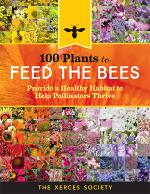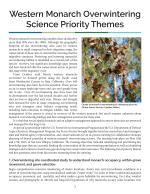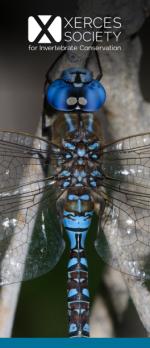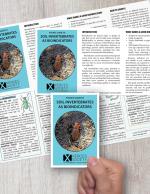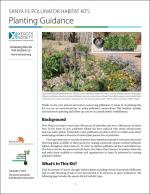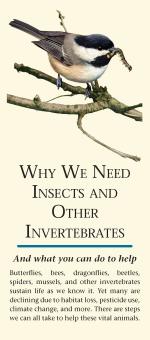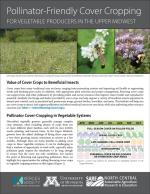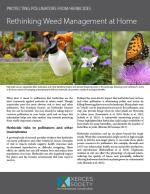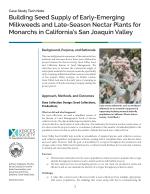As a science-based organization, the Xerces Society produces dozens of publications annually, all of which employ the best available research to guide effective conservation efforts. Our publications range from guidelines for land managers, to brochures offering overviews of key concepts related to invertebrate conservation, from books about supporting pollinators in farmland, to region-specific plant lists. We hope that whatever you are seeking—whether it's guidance on making a home or community garden pollinator-friendly, advice on developing a local pesticide reduction strategy, or detailed information on restoring habitat—you will find it here!
Find Publications
Use the search functions to sort by publication type (books, guidelines, fact sheets, etc.), location, and/or subject (agriculture, gardens, pollinators, pesticides, etc.).
Provide a Healthy Habitat to Help Pollinators Thrive
100 Plants to Feed the Bees offers browsable profiles of 100 common flowers, herbs, shrubs, and trees that attract bees, butterflies, moths, and hummingbirds.
Create a Healthy Habitat to Sustain America’s Most Beloved Butterfly
100 Plants to Feed the Bees provides at-a-glance profiles of plants that provide monarchs with nourishment. The listed plants are all commercially available, and range from milkweeds to flowering plants, shrubs, and trees that provide nectar for the adult butterfly, including those that sustain monarchs in their great migration.
This fact sheet provides detailed information on cherry tomato crop pollinators, including a list of the most important native bees that visit this crop, and steps that can be taken to protect or enhance habitat for these pollinators. The information provided is based on field research conducted by Dr. Claire Kremen (University of California, Berkeley), Dr. Neal Williams and Nikki Nicola.
A group of forty key researchers, land managers, state and federal agency representatives, and conservationists for an in-person meeting in May 2023 for collaborative strategic planning of shared priorities of western monarch overwintering science. This fact sheet summarizes the priority themes and key questions that arose from the meeting.
This brochure introduces the Xerces Society for Invertebrate Conservation and explains what we do and why.
This pocket guide is intended as a portable, accessible, basic guide for observing and learning about soil invertebrates and what their presence may indicate about soil health. It can be printed double sided and folded to fit in a pocket. In the PDF, clicking the link icon in the upper right of each profile opens the full profile in the Farming with Soil Life Handbook publication. This pocket bioindicator guide is part of Xerces’ Soil LIfe project and resources.
This handout includes instructions for planting and follow-up care for successful habitat establishment of the 2023 Santa Fe pollinator habitat kits.
And what you can do to help
Butterflies, bees, dragonflies, beetles, spiders, mussels, and other invertebrates sustain life as we know it. Yet many are declining due to habitat loss, pesticide use, climate change, and more. This brochure shows how we depend on invertebrates, introduces the major threats facing them, and lists some steps we can all take. No action is too small to help these tiny but vital animals.
for Vegetable Producers in the Upper Midwest
Cover crops have many traditional uses on farms, ranging from preventing erosion and improving soil health to suppressing weeds and breaking pest cycles. This bulletin will help farmers and managers use cover crops to attract and support pollinators and other beneficial insects on vegetable farms in the Upper Midwest, while also addressing other resource concerns.

